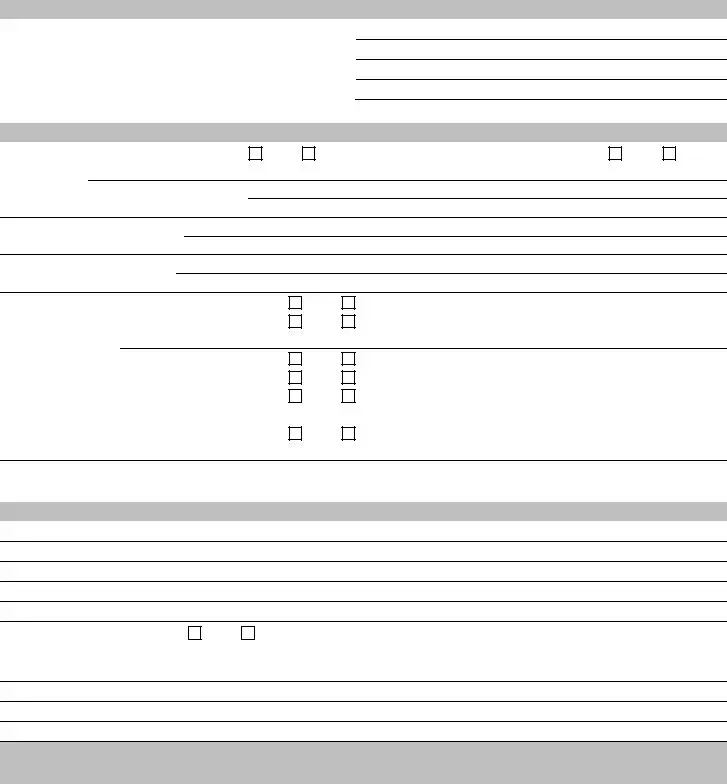Don't know how to write a slip and fall incident report? Simply open our PDF tool and follow the step-by-step instructions below.
1. Fill in Basic Incident Details
Start by entering the basic details of the incident. You can also write the store name and number at the top of the form. Proceed to fill in the date, day of the week, and exact time when the incident occurred.
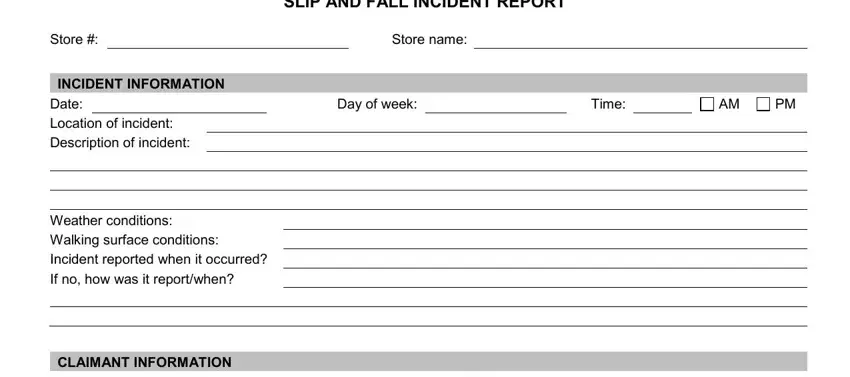
2. Describe the Incident
In the section provided, give a detailed description of the incident's circumstances. Specify the location and describe what happened, focusing on how the slip or fall accident happened.
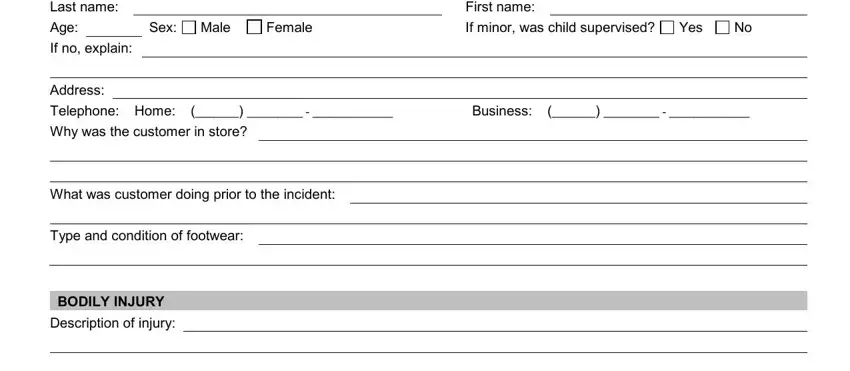
3. Document Environmental Conditions
Record any relevant weather conditions that may have contributed to the incident. Also, describe the condition of the walking surface during the fall, noting any factors like wetness or unevenness.

4. Report Timing and Witnesses
Indicate whether the incident was reported immediately. If not, provide details on the incident forms, as well as how and when it was reported. Additionally, if any witnesses are present, include their names, addresses, phone numbers, and event accounts.
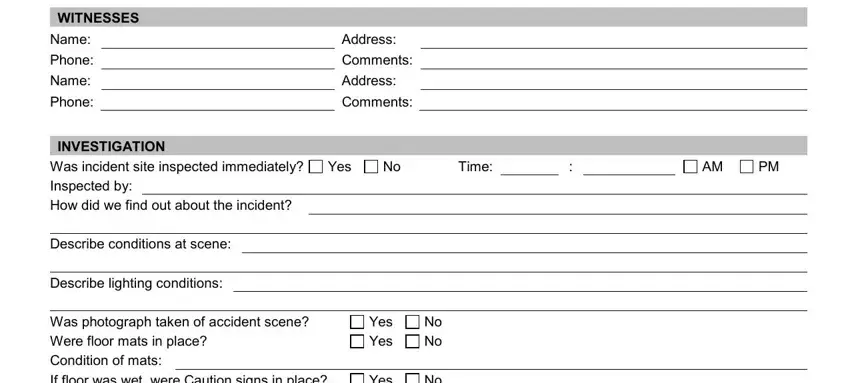
5. Provide Claimant Information
Enter all relevant personal information about the claimant, including last name, first name, age, and sex. Explain the circumstances if the claimant is a minor and was not supervised. Also, detail the claimant’s activity before the incident and describe their footwear.
6. Record Bodily Injury and Treatment
Describe any injuries sustained from the fall and any immediate medical attention or treatment provided. If the injured person was taken to a medical facility, document where and how they were transported.
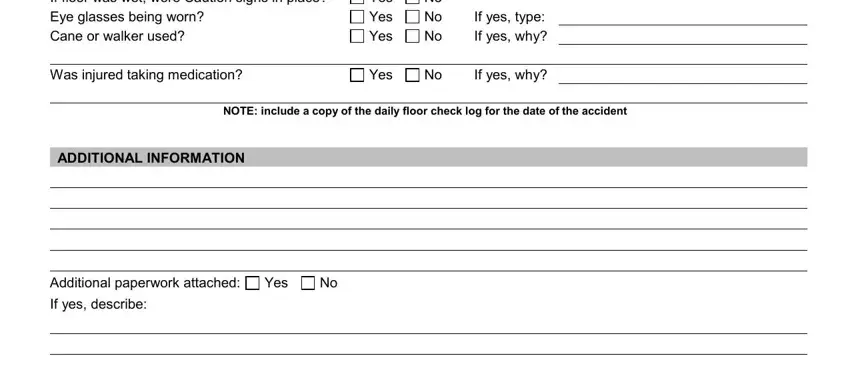
7. Conduct an Investigation
Document if the incident site was inspected immediately after the incident and by whom. Describe the overall conditions of the scene and specific elements like lighting and signage.
8. Attach Additional Information
If there are additional documents or evidence like photographs or daily floor check logs, note whether these are attached and describe them.
9. Sign and Submit
The person completing the report should sign digitally within the online editor. Once all sections are completed, review the document for accuracy, then save your changes. The slip and fall accident form can now be printed for physical records or submitted as required.
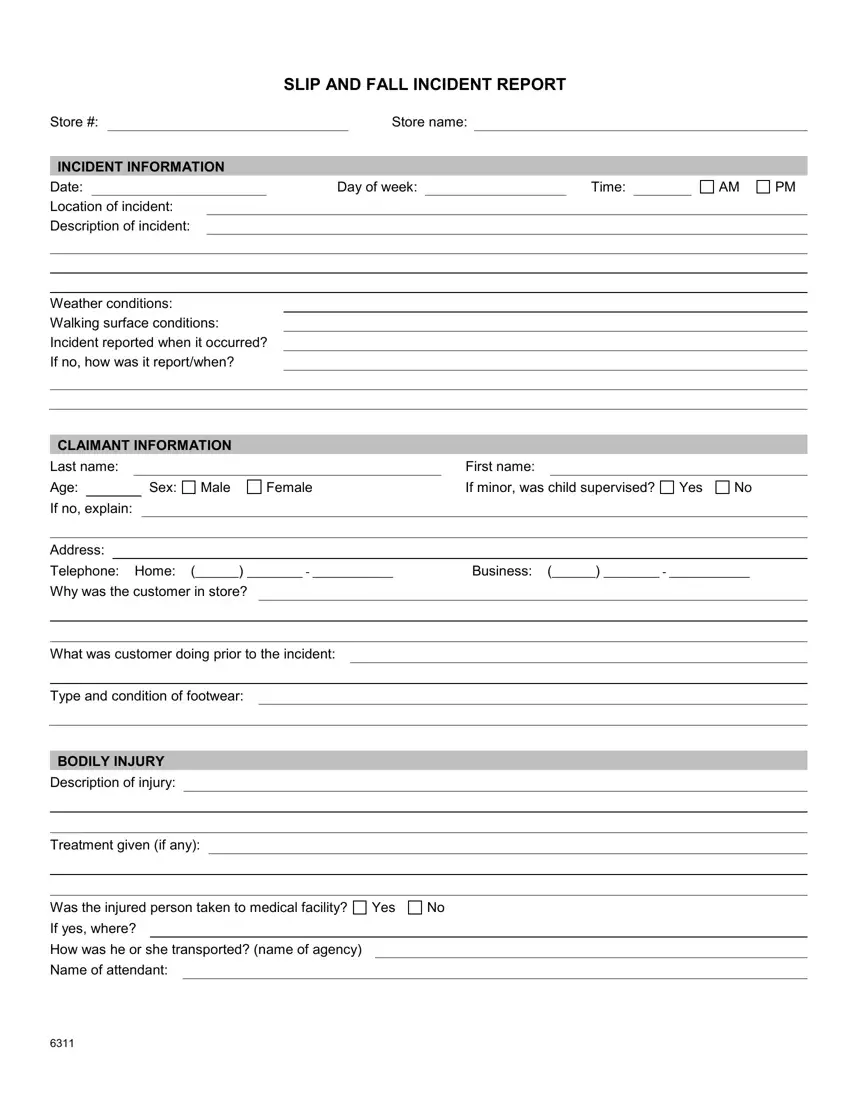
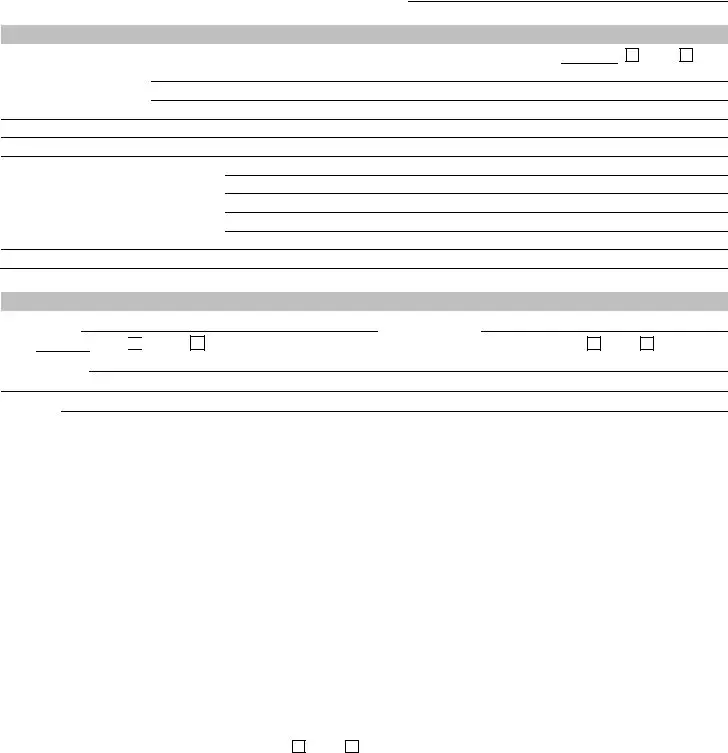

 Male If no, explain:
Male If no, explain: